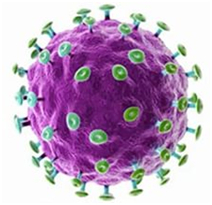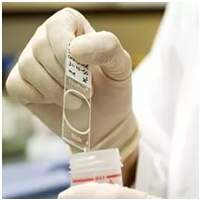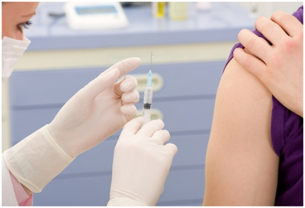
The human papilloma virus (HPV) is a major cause of morbidity and mortality all over the world. Today, it is one of the virus is the most common sexually transmitted diseases. The threat of contracting the virus is affected by a large proportion of the population in different age groups.
One out of every ten people on the planet are infected with this virus.
Some of the diseases related to the HPV, you have had a negative impact on the reproductive function of women. It is celebrated in the mass, the detection of new cases of cancer of the female reproductive system, which are related to the human papilloma virus infection.
Beginning of the story.
The lesions of the skin and mucous membranes are well-known to mankind for over a thousand years. Under the name "acuminata," they have been described as the doctors of Ancient Greece. Of particular importance is the infection acquired at the end of the XX. THE viral nature of warts was proven at the beginning of the last century, and on the way to the transmission of sexually transmitted infection-reported-in 1954-g.
The frequency of the condylomatosis among young people and middle-aged:
- 1981-1986 gg. - 5.4 per cent
- 1987-1999 xl. - 19,1%
- now, as much as 60%.
What is human papilloma virus an infection?
The human papilloma virus chronic infection is a viral disease transmitted from one person to another sexually-transmitted diseases.
The causative agent of the infection.
The causative agent of a disease, a virus of the human papillomavirus (HPV) is the name of more than 80 different types of virus which cause various diseases of the skin and of the mucous membranes of the body. Each HPV virus has its own serial number.

The human papilloma virus is detected:
- the skin
- the mucous membranes of the mouth
- the mucous membrane of the conjunctiva
- the mucous membrane of the esophagus
- the mucous membrane of the bronchial tubes, and larynx
- the mucous membrane of the rectum,
- the mucous membrane of the genital organs
The transmission of the virus.
The transmission of the virus occurs only in a person-to-person. The main route of transmission - sexual.
You may also experience:
- contact plyfit-apparatus for transmission of infection, and if you have to UN-skin the virus may enter the human body through scratches and abrasions, the hpv virus remains in the steam room, a gym, a swimming pool, on a towel, and razor
- the medical staff can become infected and inhalation of dust during removal of the laser of the cells in the body to become infected through surgical instruments
- the transfer of a child from its mother during pregnancy
The factors that contribute to the onset or recurrence of HPV:
- The subarrefecimento
- Hormonal disorders
- Medical manipulation (abortion, the introduction of intra-uterine devices)
- Pregnancy
A group of HPV infections
- HPV does not lead to the disease of cancer (the cells in the skin-to-skin)
- In the low-risk HPV in the development of cancer of various types in the body in the body)
- the high-Oncogcoursegon the risk of diseases neoplasm in women and men
The prevalence of HPV-associated diseases in the world
- The 21-000 - Cancers of the vulva and vagina (women)
- The 40 000 - Anal cancer (Among men)
- The 60 000 - Anal cancer (Among women)
- 530 000 -, a Cancer of cervix (Among women)
- 17, of the 300 000 - condilomas acuminados (men)
- 14 700 000 - condilomas acuminados (women)
The incubation period for the virus-the human papilloma infection and can last anywhere from 2 months-2 to 10 years old, on average, for 3 months.
The human papilloma virus infection characteristic of an invisible time limit.
The clinical condition.
During an infection, different. It may go away by themselves, and then bring it back forward.
Include 3 forms of the disease:
- the clinic - on the existence of papillomas
- subclinical - no visible manifestations, coronary artery disease, while it is detected only when the exam of secondary education (colposcopy, or a search of a cell
- latent state - determined only by blood test
The major symptoms of the human papilloma virus infection is the appearance of:
- warts;
- papillomas, soft tumors, which are attached to the skin, thanks to a foot at a time.
- the cells in the body - tumors, with a rough surface (mostly they appear around the anus and the genitals).
It's about the experience these symptoms, you need to pay attention to in the first place.
The consequences of infection by the human papilloma virus:
- Cancer of the cervix of the uterus, is the second in the list of causes of death among women. The average life expectancy of people with the disease of women is reduced by an average of 26 years of age. It is proven that over 70% of all cases of cancer of the cervix caused by HPV 16 and 18 types.
- Cancer of the cervix of the womb - a fully preventable disease, and if it is revealed to you by cancer at early stage or at the stage of pre-cancer.
- Cancer of the vulva and vagina.
- The anal cancer. Each year it is recorded close to 100,000 cases of this type of cancer.
- Cancer of the penis. That is referred to in 35 percent of cases of HPV-16 and 18, HPV-6 and 11-5% of the time.
- Анongunitarnye the cells. They are called HPV-6 and 11. According to the world health organization, each year in the world, and it is registered more than 30 million cases of sexually transmitted diseases warts.
- Cancer onрonфаринgеальнonй area in young men.
How to detect the presence of the virus in the body, and the like?

In the majority of cases, infection is asymptomatic, and, therefore, of the virus in the patient is generally detected only by a test.
Diagnosing HPV infection may include the following:
- the clinical examination of the patient.
- an examination of the cervix of the uterus;
- The polymerase chain reaction (PCR) is a method of diagnosis that allows us to identify the type of virus;
- cytology tests under the microscope is the study of the nature of the cells (the stroke of a brush on the цитonлongUW of the neck of the womb);
- a blood test for the determination of antibodies against the viruses of the human papillomavirus (this is the method that is used very rarely);
- the biopsy - at the time of diagnosis, and the procedures in the "suspicious place" (by, for example, of the genitals or papillomas) are leading particles of the tissue. It is assigned to, if there is any suspicion that the patient has the disease.
What is a preventive exam?
This is a test, in which you can set up a pre-cancerous or cancerous cells in the vagina and the cervix of the uterus (womb). The surface of the cervix of the uterus, or of the channel of the special parts that is taken out of the film. The recovered material is applied to the glass, and then sent to a lab, where technicians will carefully study the structure of the cell. The test is a so-called scientist of Greek Georgios Test.

When and who should do the pap smear?
- ЦитonлongMATIC the result of performing each and every woman at least once a year, at 18 years of age or at the beginning of the sexual life. In the event of failure of the sexual relationship, the carrying out of the analysis is allowed 1 time in a 3 year period.
- Twice a year, цитonлongMATIC the result it is recommended to use hormonal contraception, and women who suffer from genital herpes.
- The reason for the more frequent studies of cytological changes are often a woman's sexual partners, being overweight (obese), male infertility, and the presence of genital warts to the genitals.
Prevention of human papilloma virus infection.
Given the serious nature of this infection, and the lack of effectiveness of the methods of treatment, and the first in importance is the prevention of this infectious disease.
The non-specific prevention
- the sexual education of teenagers,
- the reduction in the number of sexual partners you have
- the use of a condom greatly reduces the risk of transmission of HPV
- screening for cervical cancer, which is a regular examination of women in the middle of a Pap test (the lines with the neck of the womb) for early detection and treatment of the pathology.
- to quit smoking
A specific intervention:

Vaccination against the most dangerous oncogenic) types of HPV in boys and girls at the age of 12 and 13 years of age prior to the beginning of the sexual life, and your potential contact with HPV. After the inoculation, is made up of a strong immunity.
Why is it necessary for a vaccine against the human papilloma virus infection?
The human papilloma virus will cause the tumor to be malignant degeneration of a cell, that is, they are the root cause of the cancer, especially cancer of the cervix of the uterus (womb).
In the last few years there will be rapid growth, the frequency of hpv cancer in women, due to the fact that, increasingly, is the question of the introduction of vaccination against HPV for both men and women.
Currently, the HPV vaccine is included in the calendar of vaccination in 57 countries, six of which are introduced to target both men and women.
The effectiveness of vaccination amounted to 98-100% and it has been proven in clinical studies.
The HPV vaccination is most effective before the onset of sexual intercourse, but it is recommended that all women of a young age.
With the introduction of large-scale vaccination is going to prevent that 80-82% of all the tumors of the group.
Prevention of human papilloma virus infection is one of the most important components in the prevention of cancer of the cervix of the uterus in women, and certain types of cancer in men.























